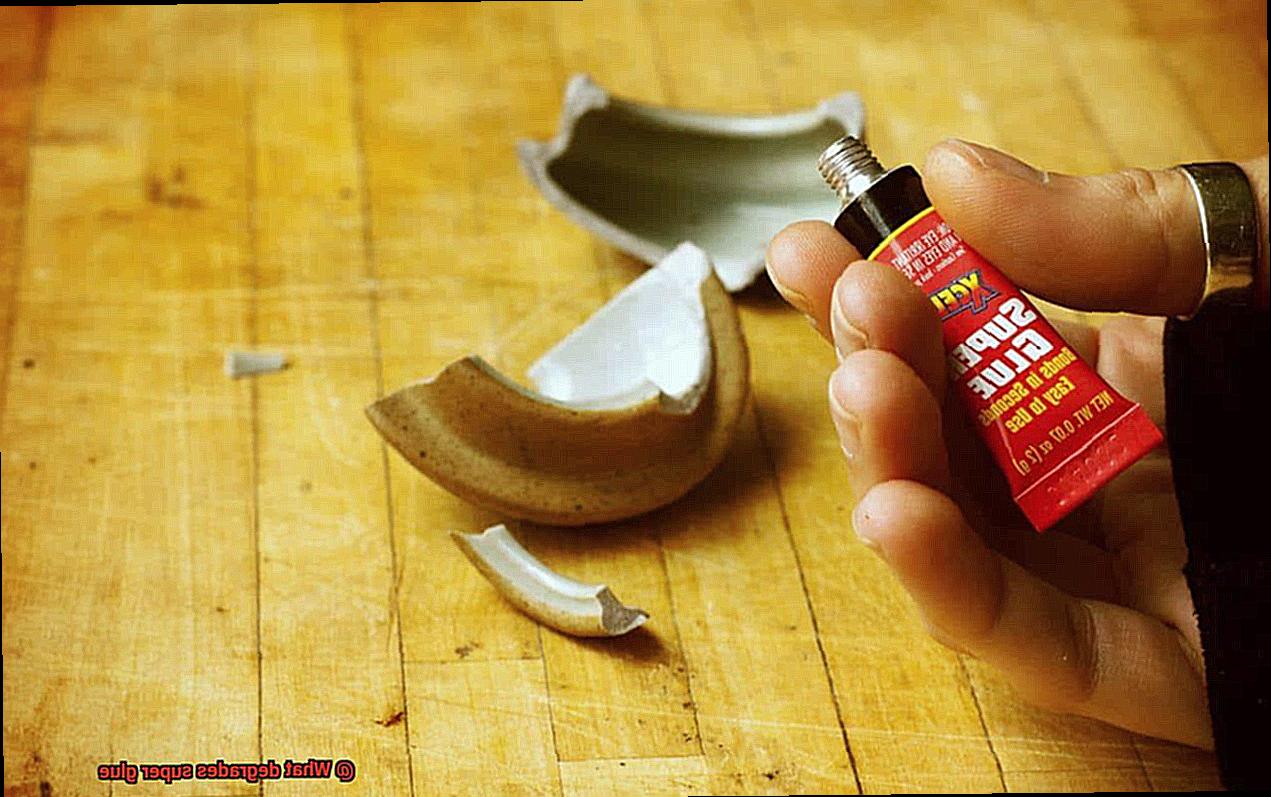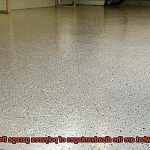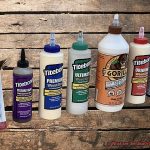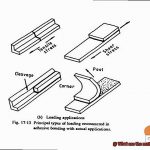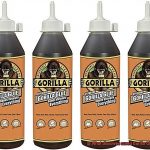We all know the magical powers of super glue – that sticky wizard that can bond just about anything in a flash. It’s like a superhero in a tube. But here’s the thing: even superheroes have their kryptonite. Yes, my friends, even the mightiest glues of our chemically advanced era are not immune to the relentless ticking of time.
You see, over days, weeks, or maybe even years, super glue goes through a mysterious process called degradation. It’s like watching your favorite action hero slowly lose their powers. Sad stuff, I know.
But here’s where things get interesting – this degradation isn’t caused by just one thing. Oh no. It’s a sneaky combination of different factors that work their magic behind the scenes. And guess what? By understanding these sneaky culprits, we can keep our beloved adhesive wonders going strong for longer.
So buckle up and join us on this wild ride into the world of super glue degradation. We’ll be exploring all those nitty-gritty details about the agents responsible for weakening its once unbreakable hold. From environmental influences to chemical reactions, we’ll uncover it all.
Get ready to become an expert on prolonging your super glue bonds and gaining a whole new appreciation for these unassuming tubes of adhesive goodness. Trust me, you won’t want to miss it.
Heat: How Does Heat Degrade Super Glue?
Contents
- 1 Heat: How Does Heat Degrade Super Glue?
- 2 Moisture: How Does Moisture Degrade Super Glue?
- 3 Solvents: Which Solvents Can Dissolve Super Glue?
- 4 Time: How Does Time Affect Super Glue Bonds?
- 5 Mechanical Stress: How Does Mechanical Stress Weaken Super Glue Bonds?
- 6 Other Factors That Can Weaken Super Glue Bonds
- 7 Tips for Maximizing the Strength of Your Super Glue Bond
- 8 Benefits of Using Super Glue
- 9 Conclusion
Super glue, a formidable adhesive, possesses the power to join surfaces with lightning speed. Yet, lurking in the shadows, lies its Achilles’ heel – heat. In this captivating exposé, we shall delve into the intricate workings of how heat mercilessly dismantles the adhesive powers of super glue while offering invaluable precautions to thwart this destructive force.
The Science Unveiled:
Cyanoacrylate adhesive, more commonly known as super glue, is an amalgamation of molecules brimming with carbon, hydrogen, and nitrogen atoms. When confronted with scorching heat, these molecules awaken from their slumber and surge with newfound energy. This heightened activity causes the glue to weaken and relinquish its grip on bonded surfaces. As if that were not enough, the feverish temperature propels the molecules into a frenzied dance of vibrations, further debilitating the adhesive bond.
The Breaking Point:
The precise temperature at which super glue succumbs to degradation may fluctuate depending on its unique composition. However, it generally succumbs between 150 to 180 degrees Fahrenheit (65 to 82 degrees Celsius). Within this fiery realm, the chemical bonds that hold the glue together begin to crumble, leaving its efficacy in tatters.
Preventing Heat Damage:
To safeguard your super glue bonds from the ravages of heat, it is imperative to heed these vital precautions:
- Shun Scorching Climes: Avert exposing glued objects to searing temperatures or unforgiving sunlight. Steer clear of stoves, ovens, and blistering heating elements that may inflict harm upon your adhesive conquests.
- Embrace Heat-Resistant Allies: For objects requiring resilience against elevated temperatures or prolonged exposure to heat, seek out specialized heat-resistant adhesives tailored for such arduous tasks.
- Preserve with Care: Nestle your super glue in a cool, dry haven to preserve its efficacy for times of dire bonding need.
- Explore Alternative Bonds: When confronted with projects necessitating resistance to scorching temperatures, venture beyond the realm of super glue and explore the wilds of epoxy or silicone adhesives, which boast high-temperature fortitude.
- Shield with Vigilance: In scenarios where gluing near heat sources is inevitable, erect protective barriers or employ heat-resistant materials to shelter the adhesive from direct exposure to fiery elements.
Moisture: How Does Moisture Degrade Super Glue?
Super glue, also known as cyanoacrylate adhesive, is a go-to option for quick and strong bonding in various applications. However, moisture can be its nemesis, compromising the integrity of the bond. In this article, we will explore how moisture degrades super glue and discuss preventive measures to ensure long-lasting adhesion.
When moisture comes into contact with super glue, it triggers a chemical reaction that causes the glue to cure and harden. This process creates a strong bond between the surfaces being glued together. However, excessive moisture interferes with the curing process, preventing the glue from fully hardening. Water molecules can disrupt the chemical reaction between the cyanoacrylate monomers, weakening the bond or preventing it from setting entirely.
Excessive moisture compromises the strength and durability of the bond created by super glue. The water molecules can penetrate the adhesive, causing it to swell, expand, and develop cracks over time. As the adhesive swells and contracts due to changes in moisture levels, it becomes more prone to breaking. This gradual degradation can render the bond brittle and less reliable.
To prevent moisture from degrading super glue, it is important to store it in a dry environment and keep it tightly sealed when not in use. If working in a humid environment, consider using a dehumidifier or applying the glue in a controlled environment to minimize moisture interference during bonding.
If a super glue bond is exposed to water or high humidity after curing, dry the area thoroughly and consider reapplying or reinforcing the bond if necessary.
Solvents: Which Solvents Can Dissolve Super Glue?
We’ve all been there – you’re working on a project, carefully applying super glue to create a strong bond, when suddenly, disaster strikes. You realize you’ve made a mistake or need to take things apart. Don’t panic. There’s a solution to your sticky situation. In this blog post, we’ll explore the solvents that can dissolve super glue and provide some tips on how to use them safely. So, grab your safety goggles and let’s dive in.
The Superhero Solvent: Acetone
When it comes to dissolving super glue, acetone is the go-to superhero solvent. Found in nail polish removers, this powerful liquid can break down the bond between the glue and the surface it’s stuck to.
Acetone is like a fierce warrior battling against the tenacious grip of super glue, effortlessly freeing materials from its clutches. To use acetone, simply apply it directly to the super glue or soak a cloth in acetone and gently rub the glued area. Soon enough, the glue will loosen its grip, allowing you to triumph over your sticky mishap.
Ethyl Acetate: Another Ally in the Fight
If you don’t have acetone on hand, don’t worry. Ethyl acetate, commonly found in paint thinners, can also dissolve super glue. It joins forces with acetone as a formidable team against stubborn adhesive bonds.
However, be cautious when wielding ethyl acetate. Although it possesses similar powers to acetone, it emits a strong odor and presents potential health hazards. Ensure you work in a well-ventilated area to mitigate any discomfort during your mission.
Isopropyl Alcohol: The Gentle Dissolver
For those seeking a milder option, isopropyl alcohol (rubbing alcohol) can come to the rescue. While not as aggressive as acetone or ethyl acetate, it still effectively dissolves super glue, acting as a compassionate hero in the fight against adhesion. Isopropyl alcohol’s gentle touch delicately erodes the bond between the glue and the surface, allowing you to separate them with ease.
Apply it directly or use a cloth soaked in isopropyl alcohol for best results.
Warm Water: The Friendly Helper
In some cases, warm water can work wonders in dissolving super glue, especially if it hasn’t fully cured yet. Warm water acts as a friendly helper, lending a hand in weakening the bond and making it easier to remove the glue. It’s like an ally providing comfort and support through its soothing warmth. Soak the glued area in warm water for a while and watch as the bond weakens, granting you victory over your adhesive predicament.
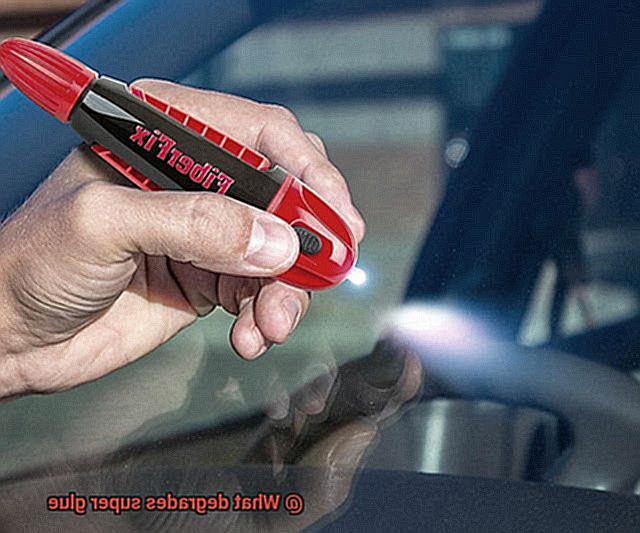
Time: How Does Time Affect Super Glue Bonds?
Super glue, also known as cyanoacrylate adhesive, is renowned for its rapid drying and strong bonding properties. However, the durability of super glue bonds can be affected by the passage of time and various external factors. Let’s delve into this fascinating topic and explore how time impacts the strength of super glue bonds.
Temperature is a critical factor that can influence the bond strength of super glue. Extreme heat or cold can cause expansion or contraction within the adhesive, leading to cracks or a weakening of the bond. To maintain the integrity of the bond, it is crucial to avoid subjecting glued objects to dramatic temperature fluctuations.
Moisture is another significant factor that can impact super glue bonds over time. While super glue requires moisture to initiate the bonding process initially, excessive moisture in the environment can weaken the bond over time. High humidity levels or exposure to water can break down the adhesive, compromising its effectiveness. To ensure long-lasting bonds, it is important to keep glued objects away from areas with high humidity or water sources.
Exposure to UV radiation from sunlight can also degrade super glue bonds. UV rays cause the adhesive to break down and become brittle, resulting in a weakened bond. To prevent this, it is advisable to keep glued objects away from direct sunlight or utilize UV-resistant versions of super glue for outdoor applications.
Furthermore, time itself plays a role in degrading super glue bonds. As months or years pass, the adhesive naturally ages and loses some of its bonding properties. This aging process can be accelerated by environmental factors such as temperature and moisture.
However, proper application and maintenance can help prolong the strength of super glue bonds. Ensuring clean and dry surfaces before applying the adhesive, using an adequate amount of glue, and allowing sufficient curing time all contribute to a stronger and longer-lasting bond.
Mechanical Stress: How Does Mechanical Stress Weaken Super Glue Bonds?
Super glue, hailed for its remarkable strength and versatility, possesses an inherent vulnerability. In this article, we will embark on a captivating exploration of mechanical stress and its ability to undermine even the most formidable super glue bonds.
Mechanical stress manifests as a force or pressure exerted upon an object, capable of inducing deformation or fracture. When applied to a super glue bond, it compromises its integrity and efficacy. To grasp the intricacies of this phenomenon, let us delve into its various sub-topics.
Types of Mechanical Stress:
- Tensile Stress: This strain arises from opposing forces that pull the bonded objects apart, stretching the bond until it eventually succumbs to rupture.
- Shear Stress: This stress occurs when forces parallel to the surface of the bonded objects cause the glue to slide or shear, diminishing its bonding strength.
- Bending Stress: The application of a force to one side of the bonded objects causes them to bend or flex, progressively undermining the bond over time.
- Impact Stress: Sudden forces or shocks subjected to the bond can result in cracks or complete fracture due to the abrupt pressure exerted.
- Vibrational Stress: Continuous vibrations or oscillations exert fatigue upon the bond, rendering it increasingly susceptible to failure.

Factors Influencing Super Glue Bonds:
Several factors influence the strength of super glue bonds, including the magnitude and type of applied force, alignment and support of the bonded objects, and the specific super glue variant employed.
Mitigating the Effects of Mechanical Stress:
To mitigate mechanical stress’s impact on super glue bonds, precise alignment and robust support are crucial. Employing supplementary reinforcement methods such as clamps or braces effectively distributes and absorbs mechanical stress. Selecting a specialized super glue variant tailored for specific stresses—such as impact or vibration—enhances the bond’s resilience.
Other Factors That Can Weaken Super Glue Bonds
Today, we’re going to take a deep dive into the factors that can weaken those incredibly strong bonds. While super glue is renowned for its adhesive properties, it’s important to understand that it’s not invincible. So, let’s get started and uncover the secrets that lie within.
First and foremost, let’s talk about temperature. Extreme temperatures can wreak havoc on super glue bonds. High temperatures cause the glue to soften, losing its adhesive strength, while low temperatures render it brittle and prone to cracking. To ensure optimal bond strength, it’s essential to consider the temperature range in which the glue will be used.
Next up is moisture. Super glue despises excessive moisture. Water or high humidity levels can interfere with the chemical reaction that occurs during the curing process of the glue, weakening its bonding capabilities. So, keep things dry when working with super glue and avoid applying it to wet surfaces or areas with high humidity.
Now, let’s address surface cleanliness. Super glue requires a clean surface to bond effectively. Contaminants like dust, oil, grease, or dirt create a barrier between the glue and the surface, preventing proper adhesion. Take a few extra minutes to ensure your surfaces are squeaky clean before applying that super glue for a strong bond.
Porous materials also present a challenge for super glue. These materials, such as wood or fabric, have a greater ability to absorb the adhesive, reducing the amount available for bonding. Consider using specific types of super glue designed for porous materials or explore alternative adhesives for these applications.
Movement and stress can also weaken super glue bonds. Constant movement or stress can disrupt the contact between molecules on the bonding surfaces, leading to bond failure. For applications involving movement or stress, flexible or impact-resistant adhesives are your best bet to withstand these conditions.
Chemical exposure is another culprit in weakening super glue bonds. Certain chemicals, like solvents, strong acids, or alkalis, can break down the adhesive properties of super glue. Be mindful of potential chemical exposure and select a glue that is resistant to those specific chemicals if needed.
It’s important to note that even super glue has an expiration date. Over time, the glue can lose its effectiveness and bonding capabilities. Always check the expiration date and use fresh adhesive for optimal results. And once you’ve opened a container of super glue, make sure to seal it properly to prevent drying out or degradation.
So there you have it, my glue enthusiast friends. The other factors that can weaken super glue bonds. Keep these factors in mind for successful bonding applications. Remember, different types of super glue may have specific guidelines or recommendations regarding these factors, so always follow the manufacturer’s instructions for the best results.
Tips for Maximizing the Strength of Your Super Glue Bond
Don’t worry, we’ve got you covered. In this guide, we’ll share six expert tips to help you maximize the strength of your super glue bond. From preparing the surfaces to proper curing and storage, these techniques will ensure that your adhesive bond is rock solid and long-lasting.
Clean Surfaces: Start with a Sparkling Bond
Before applying super glue, it’s crucial to clean the surfaces thoroughly. Dust, dirt, and grease can hinder the adhesive properties of the glue, weakening the bond. To achieve a sparkling bond, use a mild detergent or alcohol-based cleaner to wipe away any contaminants. A clean surface provides the perfect foundation for a strong and reliable bond.
Roughen the Surface: Add Grip to Your Bond
To enhance the strength of your super glue bond, roughen the surface slightly. Think of it as giving your bond some extra grip. Use sandpaper or a file to create small grooves or scratches on the material. These tiny imperfections provide more points of contact for the glue to adhere to, resulting in a stronger and more secure bond.
Apply in Thin Layers: Less is More
When it comes to super glue, thin layers are key. Applying a thin and even coat allows for better penetration into porous materials and ensures a more uniform distribution of adhesive. Avoid using excessive amounts of glue, as this can take longer to cure and may result in a weaker bond. Remember, less is more when it comes to super glue application.
Clamp or Hold in Place: Lock Your Bond in Position
For maximum bonding strength, clamp or hold the bonded pieces together firmly while the glue cures. This acts like a lock, ensuring there are no gaps between the surfaces and facilitating maximum contact. You can use clamps, rubber bands, or even your own hands to secure the objects together until the glue has fully cured. This helps create a tight and unbreakable bond.
Allow Sufficient Curing Time: Patience is Key
Super glue bonds achieve initial strength within seconds, but complete curing can take several hours or up to 24 hours. It’s important to be patient and allow sufficient time for the glue to fully cure before subjecting the bond to any stress or load. Rushing can compromise the strength and durability of the bond. So, sit back, relax, and let the glue work its magic.
Benefits of Using Super Glue
In a world where time is of the essence, super glue emerges as the superhero adhesive, offering swift bonding capabilities and unmatched versatility. Whether you’re a DIY enthusiast or a professional craftsman, super glue is a game-changer when it comes to bonding materials together. In this article, we’ll explore the myriad benefits of using super glue and why it should be a staple in your toolbox.
Instant Bonding:
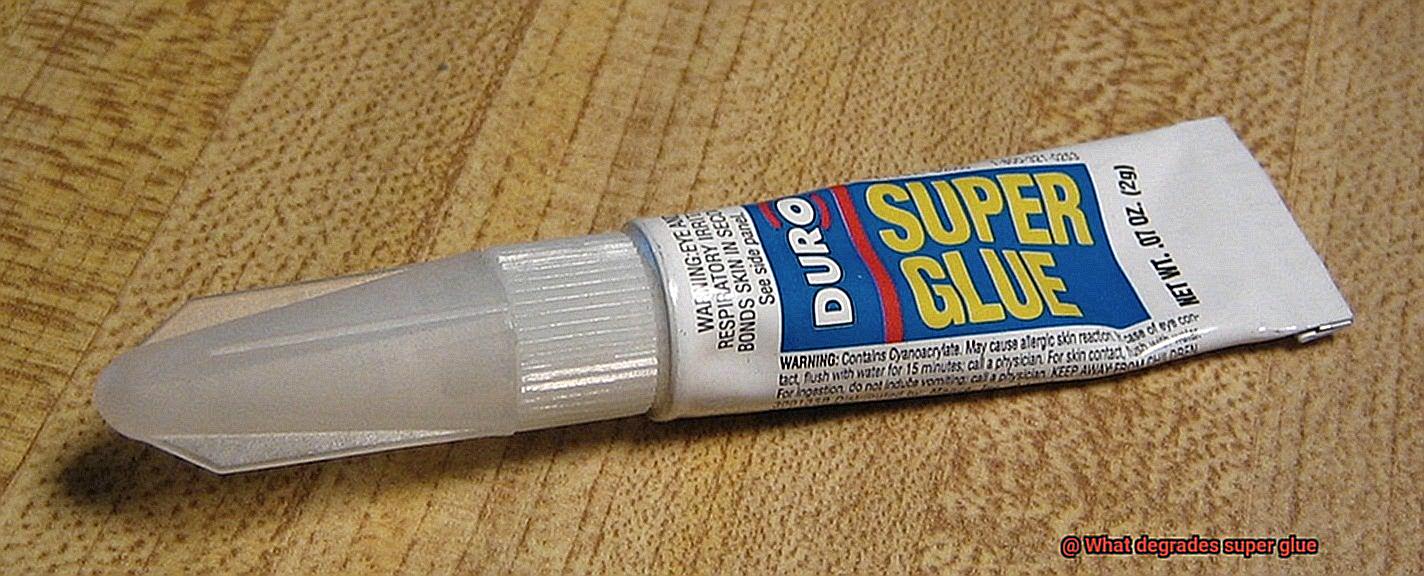
Bid farewell to tedious waiting times. Super glue offers rapid bonding in mere seconds. Its quick-setting nature saves you precious time, allowing you to move on with your project effortlessly.
Unparalleled Strength:
Super glue forms an exceptionally strong bond that can withstand tremendous stress and pressure. From metal to plastic, wood to ceramic, and even rubber, this adhesive seamlessly unifies various materials, delivering a bond that stands the test of time.
Versatility at Its Finest:
Crafting, jewelry making, model building – you name it. Super glue is your go-to adhesive for all your creative pursuits. It even finds its place in medical applications as a reliable wound closure solution.
Resistant and Reliable:
Super glue boasts impressive resistance to water and most chemicals. Whether your project is indoors or outdoors, this adhesive can withstand harsh environmental conditions without compromising its bonding properties.
Invisible Bond:
No unsightly residue or visible seams here. Super glue’s transparent formulation ensures a seamless blend between bonded surfaces, making it perfect for projects where aesthetics matter.
Extended Shelf Life:
Worried about wasting adhesive? Fear not. Super glue has a long shelf life if stored correctly – it can remain effective for months or even years without losing its potency. This translates to cost savings and convenience.
Easy Application:
Compact and portable, super glue can be carried wherever you go, ready to save the day. Its various applicators, such as squeeze tubes or precision tips, allow for precise and mess-free application, ensuring every drop counts.
_59ZzuLJcTw” >
Also Read: Does Glue Expire?
Conclusion
Super glue, also known as cyanoacrylate adhesive, is a powerful and fast-acting adhesive that can bond various materials together. However, despite its strength, there are certain substances that can degrade super glue and weaken its bond over time.
One common substance that can degrade super glue is acetone. Acetone is a strong solvent commonly found in nail polish remover. When applied to super glue, acetone breaks down the chemical bonds in the adhesive, causing it to lose its grip. Soaking the bonded area in acetone or applying it with a cotton swab can help loosen the super glue and make it easier to remove.
Another substance that degrades super glue is heat. Exposing super glue to high temperatures can cause it to break down and lose its effectiveness. This is why it’s important to store super glue in a cool and dry place to maintain its quality.
Additionally, moisture can also degrade super glue over time. When exposed to water or humidity, the moisture can seep into the adhesive and weaken its bond. It’s important to keep super glue away from water sources and ensure that the surfaces being bonded are dry before applying the adhesive.
In conclusion, while super glue is a strong adhesive, there are certain substances that can degrade its effectiveness. Acetone, heat, and moisture are all factors that can weaken the bond of super glue over time.

